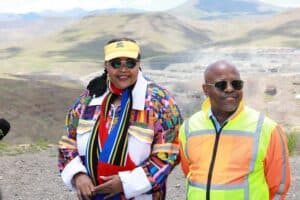South Africa was rightly proud of its water supply achievements in the first decade of democracy after the 1994 elections.

South Africa was rightly proud of its water supply achievements in the first decade of democracy after the 1994 elections.
The country was cited as a global leader in the provision of water supply and sanitation. Way ahead of the 2015 deadline, it proudly claimed the achievement of the Millennium Development Goal for water. The number of people without access to safe water was more than halved. Even the more difficult sanitation target was reached.
But progress will now be measured by new standards in the future and the country will have to face up so some bad news. Not only is South Africa failing to meet the new set of goals set by the UN for 2030. It’s actually going backwards.
Achieving the Sustainable Development Goals (SDGs) in water will be much more difficult. First, the goal is that water and sanitation will be available for everyone. But providing infrastructure will not be enough. The goal is not just availability but also “sustainable management”.
Successful interventions
In the first decade of democracy, infrastructure was built to provide safe water supplies to almost 20 million people. This was a relatively easy task. As an upper-middle income developing country, South Africa had the financial resources and the technical skills to achieve this.
What was missing before South Africa became a proper democracy in 1994 had been political will. Successive apartheid governments simply ignored poor black communities, particularly in rural areas. They were expected to meet their needs from their own resources, despite being systematically excluded from access to the mainstream economy.
Operating water infrastructure costs money. So the other important achievement was to put in place the necessary financial arrangements. These ensured that no one went without water because they could not afford it.
There were two legs to this. A financial framework was established in 2001 and put in place for municipalities. The “equitable share of revenue”, which is guaranteed under the country’s constitution, was calculated to provide enough for operations in municipalities where many poor residents could not afford to pay.
At the same time a “free basic water policy” was established. This obliged municipalities to provide a basic supply for free – they could choose whether it would be just for poor families or for all users.
The basic allowance was set at 6 000 litres per household per month. That was an equality measure. It was based on how much people who had to carry water in buckets from public taps were likely to use. People who used more were expected to pay. Tariffs were structured to require that the more people used, the more they paid. So households that used a lot of water were subsidising those who used water sparingly.
This policy was challenged. Problems arose, particularly in cities where most households had waterborne sanitation. It was difficult to limit consumption to 6000 litres if water was also used to flush toilets. In response, some of the richer cities increased the “free basic” allowance. Many others, under political pressure, simply turned a blind eye. They did not meter household use. Not surprisingly, people who had easy access through a tap in the home started to use more.
While usage increased, the infrastructure often lagged behind. As a result, in many communities, particularly in the poorer rural areas, water stopped flowing out of the taps.
The tide turns
At global level, a specific indicator has been agreed to measure country performance on this goal. It is “the percentage of the population using safely managed drinking water services”.
On this measure, South Africa is doing poorly.
The Department of Water and Sanitation reports that many of its municipalities do not provide safe water. For two years it delayed release of its “Blue Drop” report for 2014, which showed an 8% drop in drinking water quality between 2012 and 2014.
Even worse, the reliability of those supplies is going down. In 2015 over 25% of households reported that their supplies had been interrupted for longer than two days or for more than two weeks in the year, the standard that municipalities are required to meet. Data for interruptions during the recent drought have not yet been published.
The Department of Water and Sanitation has acknowledged that there are problems. But current criticisms of management failures and wasteful expenditure by both national and local government are not encouraging. The challenges are aggravated by a failure to appoint qualified personnel in municipalities. One consequence is that, despite massive expenditure, the proportion of people without safe water has remained more or less constant for the past three years.
A mountain to climb
So South Africa is no longer a poster-child for effective achievement of water supply and sanitation goals. Rather it has joined other countries on the continent which have a mountain to climb to achieve the world’s 2030 goals.
The first step is for government to acknowledge this challenge. Then national and local government must explain to the wider community what it intends to do to achieve the goals. And this cannot be just a public relations exercise to regain the country’s status as a leader in the sector. It must be a practical blueprint that explains how government is going to meet its constitutional commitment to ensure that all South Africans have access to safe and reliable water and sanitation.
Mike Muller, Visiting Adjunct Professor, University of the Witwatersrand
This article was originally published on The Conversation. Read the original article.






